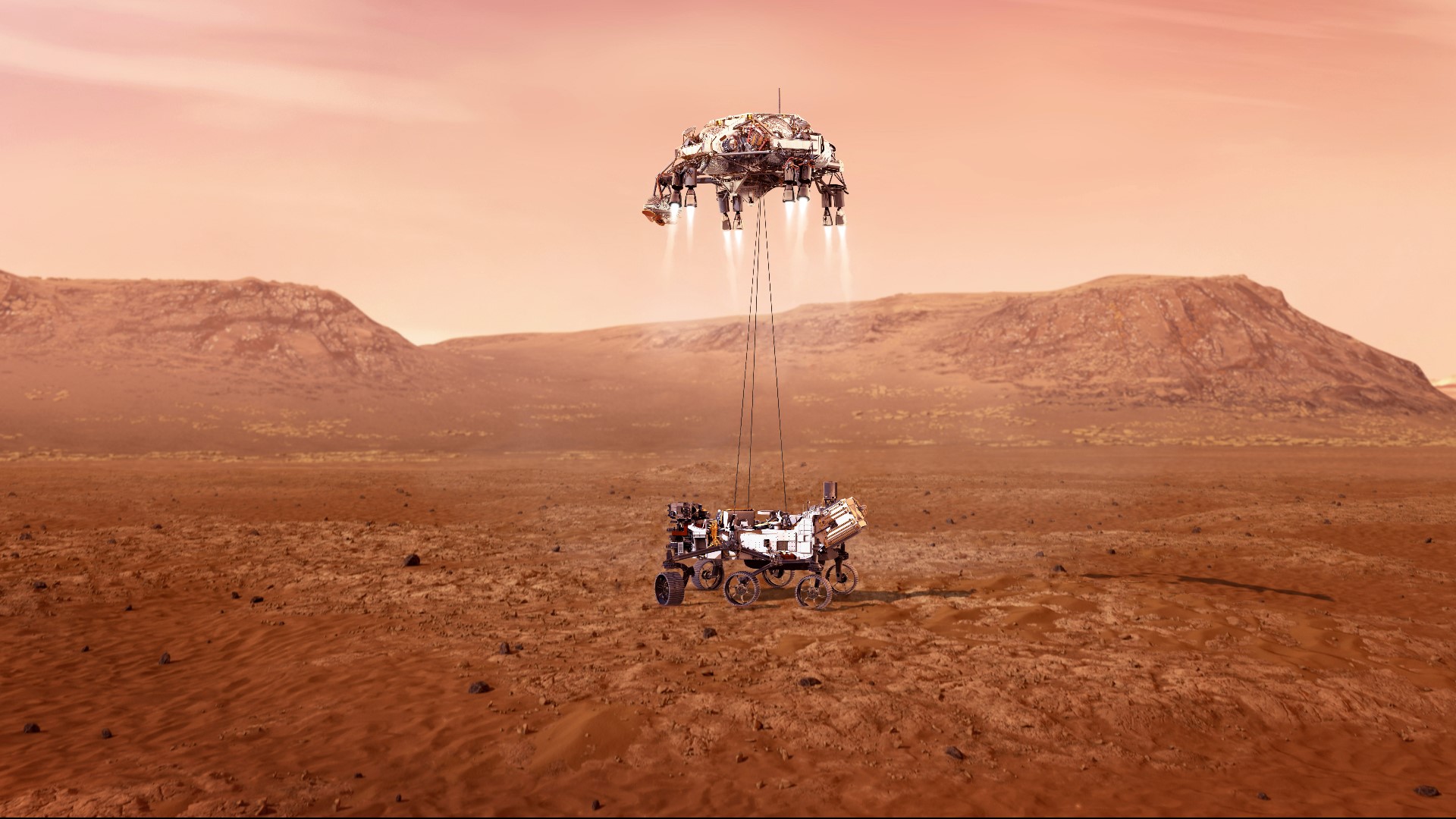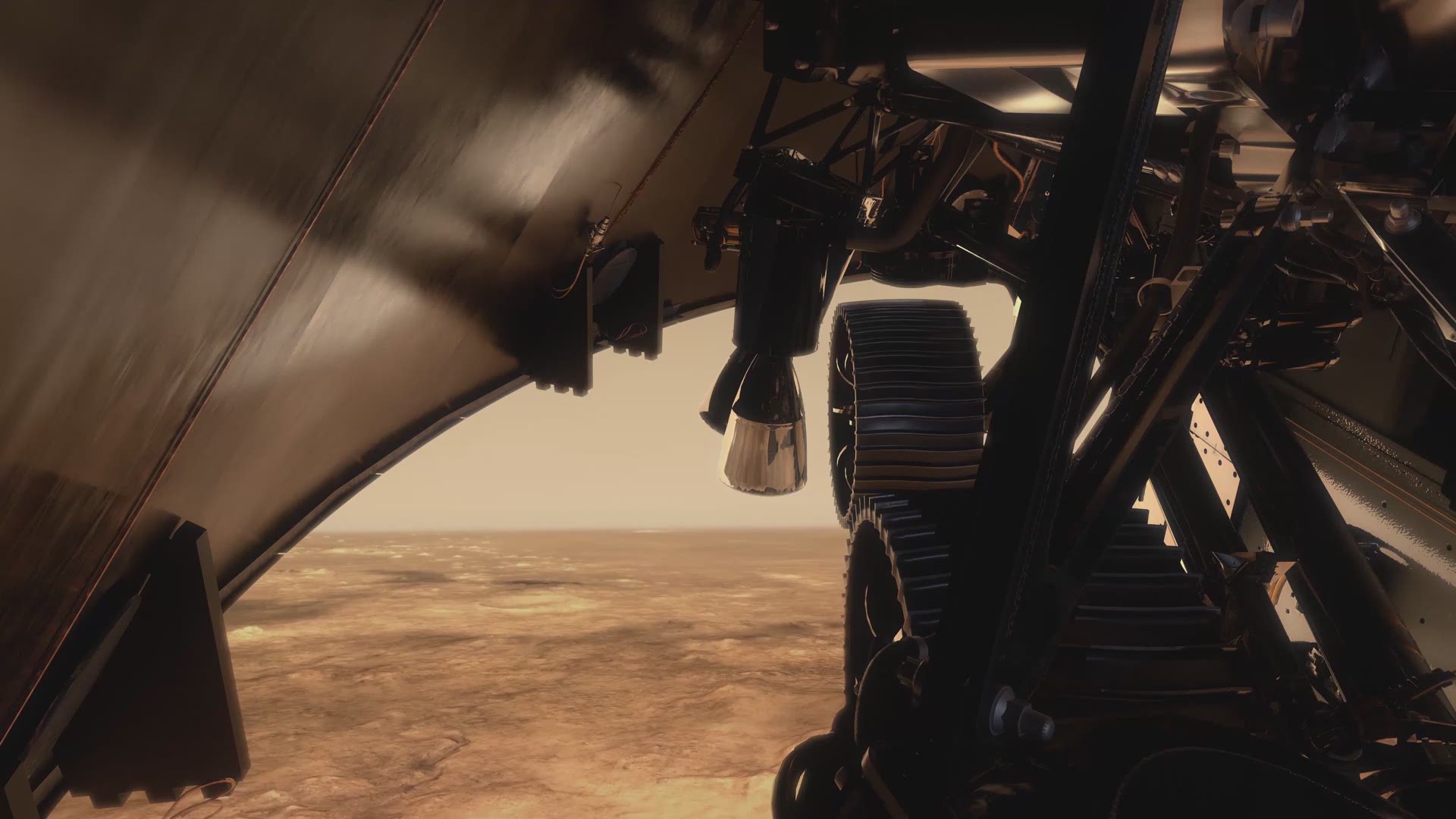WASHINGTON — After a nearly seven month journey covering almost 300 million miles through space, NASA's Perseverance rover has landed on Mars.
It's the most advanced rover ever sent to the Red Planet and was aiming for a touchdown on Feb. 18 in the Jezero Crater, an ancient river delta that could hold evidence of past life.
The plan is to eventually return rock samples collected by the rover. But before that can happen, NASA had to pull off a daring landing.
After all, landing on Mars is no easy task. Only about 40% of the missions that have been sent to Mars - by any space agency - have been successful, according to NASA.
If all goes well with landing, everyone back on Earth will later be able to see and hear what it's like to land on Mars. The mission is carrying more cameras than any other interplanetary mission in history, including 19 cameras on the rover and four on other parts of the spacecraft, plus a microphone attached to the side of the rover.
Perseverance is also bringing along a helicopter named Ingenuity, which is lined up to be the first aircraft to attempt powered, controlled flight on another planet. The goal is to have the helicopter perform one or more flights on Mars within 30 days.
What time will Perseverance land on Mars?
NASA's Perseverance rover landed on Mars on Feb. 18, 2021, at 3:55 p.m. EDT.
On Feb. 18, 2021, it'll take radio signals about 11 minutes, 22 seconds to travel from Mars back to Earth.
What are the "7 minutes of terror"?
The most intense part of the mission by far is the entry, descent and landing on Mars.
Over the course of seven minutes, commonly referred to as the "7 minutes of terror," the spacecraft will slow from about 12,100 mph when it enters the Martian atmosphere to about 2 mph at touchdown.
According to NASA, here's what will happen during entry, descent and landing
- About 240 seconds after the rover enters the atmosphere: A parachute deploys and eventually slows the vehicle down to about 200 miles per hour.
- Once it's about 6,900 feet above the surface: The rover drops from the backshell and the rocket-powered descent stage takes over
- When the descent stage engines fire up: It moves to one side to avoid hitting the parachute and backshell coming down
- When the descent stage slows to about 1.7 miles per hour: "Skycrane" maneuver starts
- About 12 seconds before touchdown and about 66 feet above the surface: The descent stage lowers the rover on a set of cables about 21 feet long
- When Perseverance senses its wheels have touched the ground: The rover quickly cuts the cables and the descent stage flies off to land on the surface as well, a safe distance away
This NASA animation shows the descent stage and "skycrane" maneuver in action:
How to watch Mars rover landing
NASA TV's live coverage from the Jet Propulsion Laboratory in Southern California starts at 2:15 p.m. Eastern. JPL's YouTube page will also offer a 360-degree live stream featuring an immersive look at the control room during entry, descent and landing.


